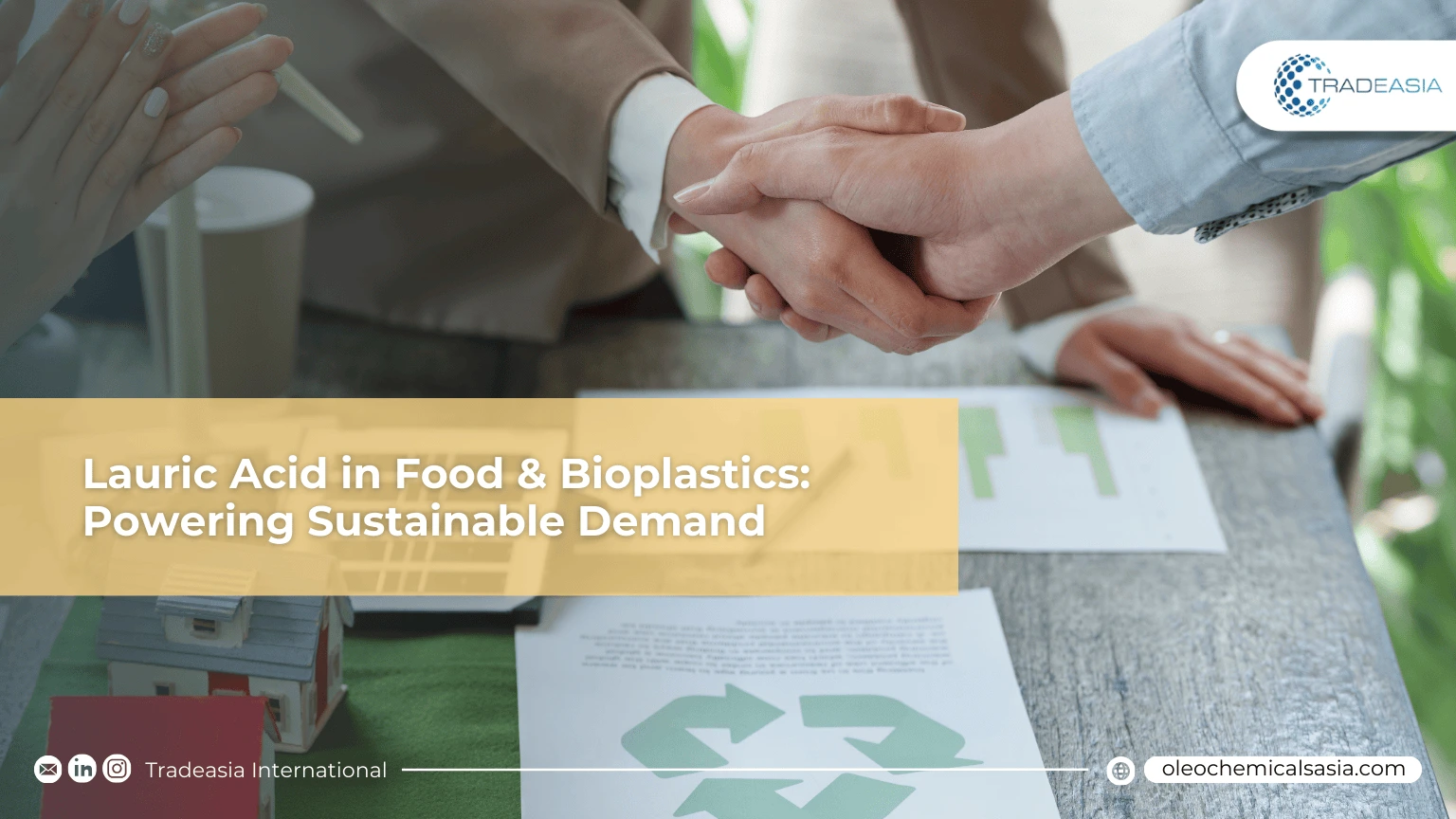Article
07 September 2025
Lauric Acid in Food & Bioplastics: Shaping Sustainable Industry Demand
Oleochemicals

Table of Content
- The Global Push Toward Bio-Based Innovation
- Lauric Acid’s Expanding Role Across Sectors
Article
07 September 2025
Oleochemicals

The global bioplastics market is entering a transformative phase, valued at USD 16.8 billion in 2025 and projected to soar to USD 98 billion by 2035, reflecting a remarkable CAGR of 19.3%. This expansion is not just about market numbers—it is driven by regulatory frameworks pushing industries to adopt renewable and biodegradable materials, especially in packaging, automotive, and agriculture. As these sectors search for sustainable alternatives, lauric acid, a vital palm-derived fatty acid, is finding its place at the core of this transition.
This is where global supply partners like Tradeasia International, with strong expertise in palm and oleochemical trading, bridge the gap between raw material availability and sustainable industry demand. As one industry leader once noted, “the strength of tomorrow’s bioeconomy lies not only in innovation but in reliable access to quality raw materials.” By connecting producers with palm-based resources such as lauric acid, Tradeasia quietly reinforces this movement toward cleaner growth.
Lauric acid has emerged as a cornerstone ingredient in both the food and beverage industry and the rising bioplastics sector. In foods, it represents 14.2% of global lauric acid use, functioning as a versatile emulsifier, preservative, and flavor enhancer in confectionery, bakery products, and processed goods. On the consumption side, North America dominates with a 32.4% share, valued at around USD 1.2 billion in 2023, followed by Europe and the rapidly industrializing Asia-Pacific region, where abundant raw materials are fueling growth.
Momentum is especially visible in September 2025, as sustainability policies like plastic bans and compostable packaging mandates intensify. This wave is strengthening the case for bio-based products, making lauric acid not just a chemical input but a driver of brand competitiveness and regulatory compliance. For palm trading businesses, its dual role—enhancing food quality while enabling biodegradable plastics—creates a strategic opening to align with eco-conscious consumer trends. The Asia-Pacific region, with supportive government initiatives and growing urban markets, is emerging as a critical hub for future expansion.
In essence, lauric acid stands at the intersection of food innovation and bioplastic adoption. Its rising demand is not only fueling growth in 2025 but also shaping a long-term circular economy where palm-based ingredients support both consumer needs and environmental commitments.
Sources:
Future Market Insights - Bioplastics Market Analysis - https://www.futuremarketinsights.com/reports/global-bio-plastics-market
Market.US - Lauric Acid Market Size, Share, CAGR - https://market.us/report/lauric-acid-market/
Complete Guide to Palm-Derived Fatty Acids (Oleochemicals Asia) - https://www.chemtradeasia.co.id/market-insights/what-is-lauric-acid-palm-fatty-acid-guide
We're committed to your privacy. Tradeasia uses the information you provide to us to contact you about our relevant content, products, and services. For more information, check out our privacy policy.
Leave a Comment